From the Desk of Intern Susan:
A Chat with Author/Illustrator Amy Young
 August 13th, 2013 by jules
August 13th, 2013 by jules
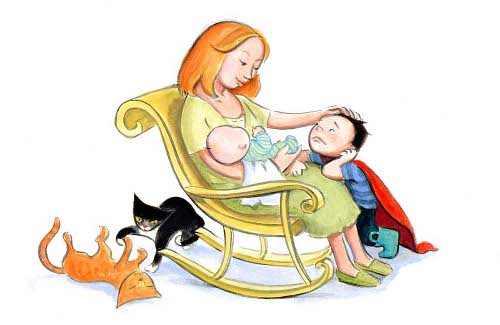
Oh no. Even Mom wanted to eat him. I ran and got her an apple.”
Quick Note from Jules: This is the second post from my Summer 2013 Intern, Susan Johns, who has been assisting me with various types of work for the past few months and who is really eager to learn more about writing and publishing. Her first post—and more about Susan—is here.
Hello again, 7-Imp readers! First, let me say a quick thanks for all the kind words of encouragement after my first post. You sure know how to make a gal feel welcome around here! This summer has been such a treat, and I will be sad to see it come to a close. But, worry not! You’re not rid of me yet. Jules has been helping me with two very exciting interviews  over the past few weeks, and I’m excited to be sharing the first one with you today.
over the past few weeks, and I’m excited to be sharing the first one with you today.
Leafing through the stacks of books at the Danielson house, it is hard not to become overwhelmingly entrenched in fandom-ly mystic wonder. As I poured over the blissfully endless words and pictures, this book immediately struck me. The art has a unique comic quality, the text is built to work for a wide range of readers, and I immediately connected to the story in its seemingly simple, incredibly humorous, and cleverly subtle messages about sibling relationships.
Young protagonist Thomas doesn’t think his little brother Nathaniel is all that interesting. In fact, all he really does is poop and scream. But, when the grown-ups in the house talk about “eating him up,” Thomas steps in to protect Nathaniel from ending up on the dinner table. I got in touch with author and illustrator Amy Young to chat about Don’t Eat the Baby! [Viking, May 2013] and how she got to where she is today.
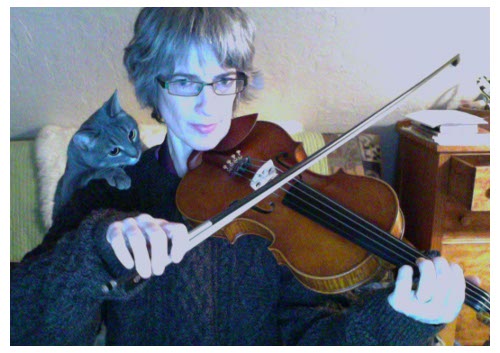
Susan: Could you speak to your professional past and how you got your start in picture books?
Amy: I have always loved making art. I studied painting in undergraduate and graduate school, but when it came time to enter the “real world” I had no idea of how to make a living. I did not want to teach, and the schools I went to did not present careers in graphic design or illustration as viable options.
So, I panicked and went to law school. I figured I could work part-time and paint the rest of the time. Law was an exciting career in many ways, but it just took too much time away from art. Eventually, I met a group of illustrators and found my way into that world, illustrating for newspapers and magazines. At some point I realized that doing picture books would be the perfect job for me, because I enjoy writing, I like working on one project for a long period of time, and I have always connected with children.

Susan: What does the creative process look like for you?
Amy: The creative process is a murky and magical thing, deeply frustrating at times and wildly fulfilling at others.
To write, I usually sit down and hammer out ten stories at a time. If I am lucky, one or two will have possibilities. Then, when I am not looking for it, the Art Gods will drop a story into my lap, more or less fully formed. They like to watch me sweat; I don’t know why.
As for the artwork, once I am going on a project with a deadline looming, I usually stay pretty focused.
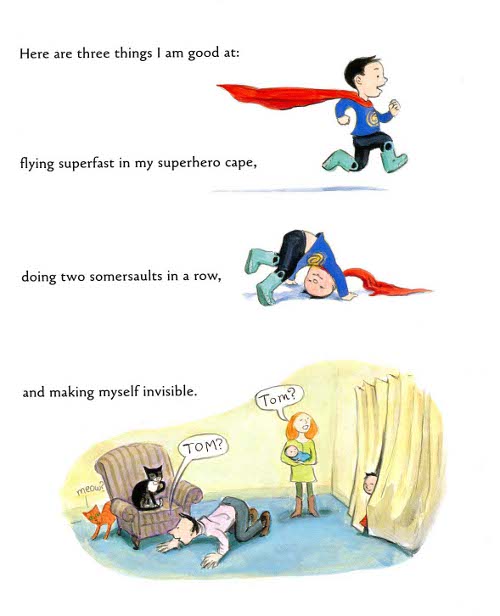


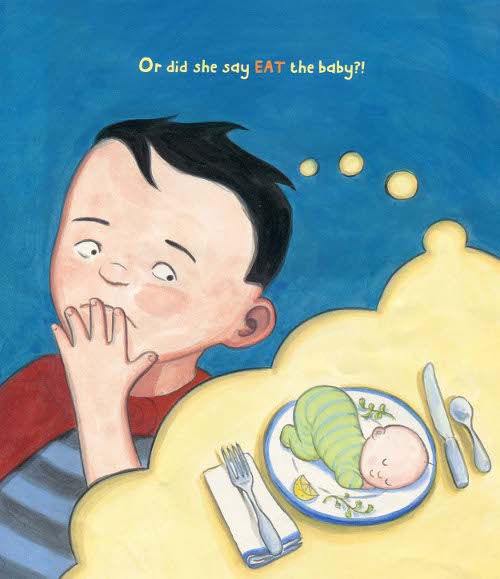
Susan: How/where/when do you work best, and what keeps you motivated?
Amy: I write just about anywhere—at home, in my studio, on the couch in the living room, at coffee shops—anywhere that lets the juices flow. Same with the rough sketches. I do the finished art in my home studio, usually listening to music. When I am under contract, approaching deadlines keep me motivated. Otherwise I meander along without doing anything for awhile, until an internal pressure grows and grows, and I feel I will burst if I don’t do something creative.
Susan: How do you approach the business/publishing side of picture books?
Amy: I recently signed on with Linda Pratt at the Wernick & Pratt Agency, and that has been really great for me. Linda takes care of the business end of things and helps me navigate any tricky issues that arise. She is also a fabulous sounding board for ideas about both text and illustrations.
Susan: I see you have worked as an illustrator and an author/ illustrator in the past. What does the collaboration look like in comparison to your independent work? How do those experiences differ? Do you prefer one over the other?
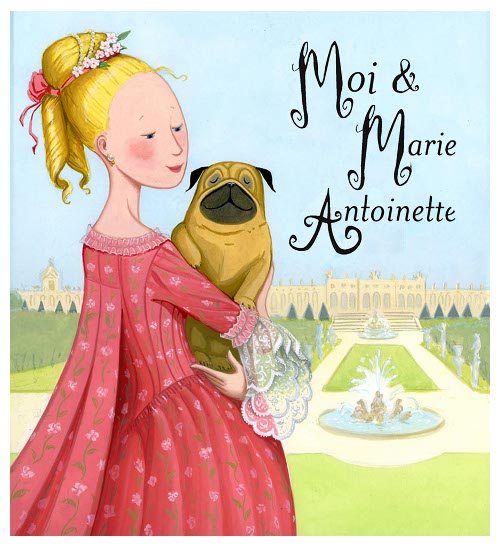
Amy: The collaborations I have done were all delightful — and very different from each other. When I illustrated Moi and Marie Antoinette [Bloomsbury, 2006] by Lynn Cullen, I almost felt as if I were illustrating my own work, because the feisty little dog-narrator, Sebastian, is just the type of character I would have liked to have created. And for Spike & Cubby’s Ice Cream Island Adventure [Henry Holt, 2004], author-friend Heather Sellers and I collaborated on both creating the story and the layout of artwork — all very unusual in the picture book world. When I illustrated the Easy-to-Read My Pony Jack series [Viking], I asked the editor to run my sketches and artwork by the author, which again is not standard procedure: I have not ridden horses in a long time, and I wanted to be sure I had drawn all the bits and bridles and reins and saddles correctly.

As to my preferences, in general I prefer to illustrate my own work, because I am in full control and I can change the text to fit with the art as it evolves. Sometimes, however, it is refreshing to illustrate someone else’s manuscript; it can take me places I wouldn’t go on my own. I will only illustrate someone else’s work if it sparks my imagination, and if I think my style would be a good fit. Right now I have so many story ideas of my own that it would take something really special to lure me away.
Susan: In Don’t Eat the Baby!, I really love the way you draw on Thomas’s complex feelings about his brother, Nathaniel. He’s struggling to share the spotlight with the baby, and the reader can certainly detect a hint of jealousy. Yet, you see how very much he cares in his anxiety and his rush to protect his brother when he misunderstands the adult chatter. How did you come to shape this character and his story?
‘Just look at those plump, juicy thighs!’
She picked him up and started to nibble on his toes.”
(Click to enlarge)
Amy: Adults tend to discount children’s emotions. Because children do not yet face the issues and responsibilities of adulthood, they think that children are carefree. I remember differently, and I even remember saying to my future adult self, “Don’t you ever forget about this and how it feels.” A lot of my writing comes out of that message to myself.
In Tom’s case, he is not terribly pleased or impressed by his younger brother Nathaniel, for real and valid reasons. But when he thinks that Nathaniel is in danger, Tom does what he knows is right. He makes a moral choice, which not only makes him grow as a person but also allows him to become more comfortable in his role as big brother. On the one hand, the story is cute and funny, because the reader knows that Nathaniel is never in danger, but on the other hand, Tom is a real hero for stepping up when no one else will.
But everyone made a big fuss over him.”
(Click to enlarge)
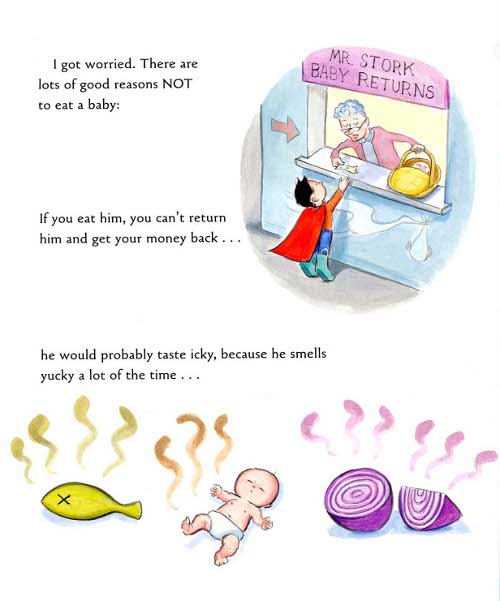
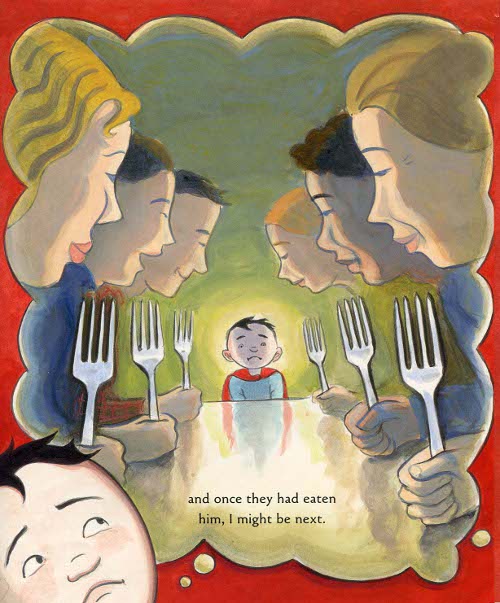
Susan: How has this process compared to that of Belinda the Ballerina [Viking, 2002] and your other works?
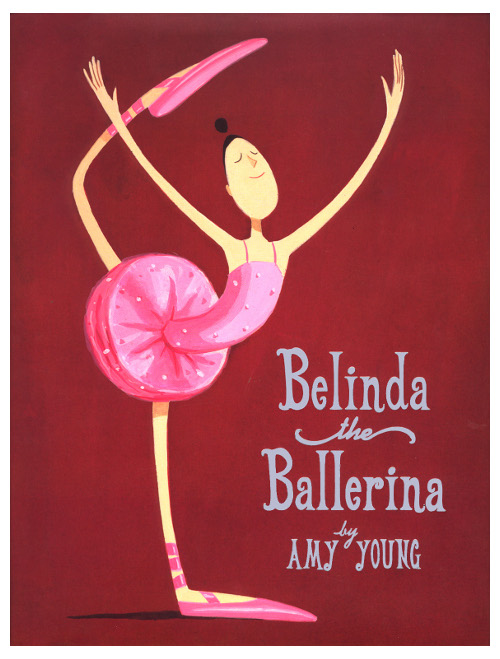

Amy: Like many authors, I don’t consciously invent characters. They just show up, and they usually are in some kind of sticky situation. The character is often inspired in part or whole by a real life person or situation, or sometimes by something that catches my eye or ear in a particular way. The Mud Fairy [Bloomsbury, 2010] was inspired by a little girl I know who looked all dainty and delicate, like a little fairy, but who was a complete tomboy dynamo. Belinda’s story is really my story, in disguise, with ballet substituting for art (and Belinda is probably a sweeter person than I am).

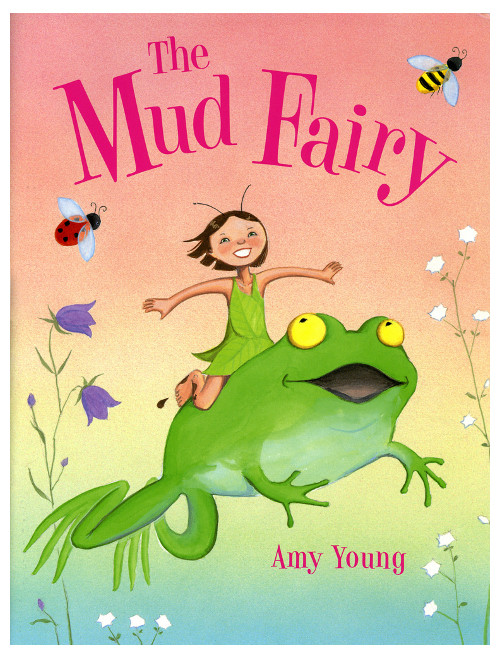
The inspiration for Don’t Eat the Baby! began with a friend of mine, who recently became a grandmother. She adored her grandchild, and she would express it by saying, “I could just eat him up!” and even “I could swallow him whole!” It struck me that that could sound terribly alarming to a child. When my editor Joy Peskin sent me a picture of her adorable new baby boy, I wrote back, “He’s so cute, how can you stand it?” She replied, “I can’t, I just want to take a bite out of his fat cheeks,” to which I responded in the subject line: “DON’T EAT THE BABY!” That was Tom’s voice speaking.
Susan: In the midst of his panic and worry, Thomas is very committed to his superhero identity. Do you think he truly believes Nathaniel is in danger, or is he indulging in the fantasy and seeking out a villain? To what extent does he need this experience to cope with his feelings around his new brother?
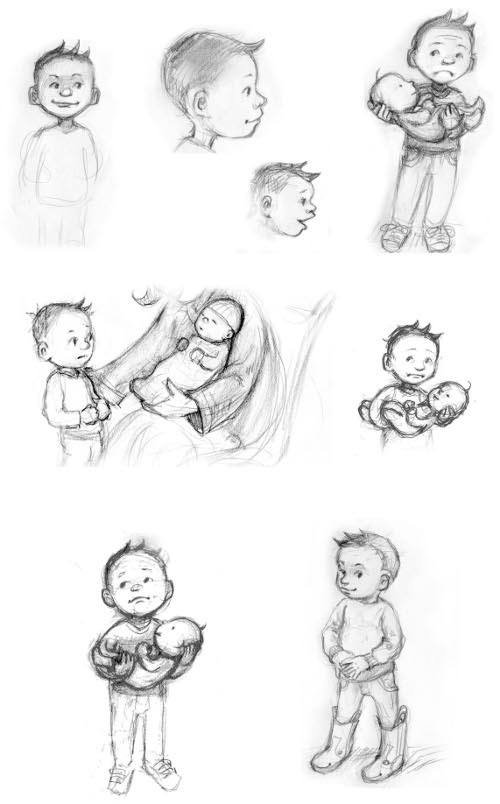
Amy: Oh, he definitely believes the danger is real. And I think he is heroic for trying to save his brother. As you note, the experience does help him to embrace his role of big brother.
Susan: The adult interactions in the book are both patient and loving, and Thomas is never neglected due to Nathaniel’s presence. These characters are at once idealistic and authentic, and they can provide valuable role models for families accepting a new member into the clan. What inspired you to write this work, and who is your intended audience?
and we had apple pie for dessert.”
(Click to enlarge)
Amy: I usually try to write on several levels. My first audience is always my child readers, to whom I feel a responsibility to be not merely entertaining, but honest as well. I also hope that the book will strike a chord with adults, and give them a window into the world children inhabit. One audience I wasn’t directly considering was babies, but I have been getting reports back that they love the book too, no doubt because a baby plays such a prominent part in the story.
Susan: What message might your readers take away from it?

and someday I am going to teach him all my best tricks.”
Amy: My editors and I did not want this to be scary book in any way: Tom is the only one who is ever really worried about Nathaniel. Nonetheless, children might realize that they have important choices to make, which affect themselves and others.
Adults might realize that a child’s experiences of the world can be vastly different from their own, and that the child’s experience should be respected. For example, Grandma tells Tom that he will love having a baby brother. That is true in the end, but what about the adjustment involved? What if instead she had said, “I think you will like being an older brother, but things will be very different,” thereby opening the door for Tom to talk about how he feels?
Susan: What has been your greatest professional challenge?
Amy: Getting my first book published. It took ten years of trying, off and on. Then I got offers on two different books from two different publishers within the same week. My time had finally come.
(Click to enlarge)
Susan: Your greatest triumph?
Amy: I have been honored to receive various awards for my books and was especially delighted with two appearances in the New York Times Book Review (one for Belinda the Ballerina and one for Don’t Eat the Baby!), but by far the greatest joy comes when a parent tells me that their child loves one of my books — and asks for it night after night.
Susan: If you could give one piece of advice to aspiring authors, what would it be?
Amy: Work to find your own unique voice and the story that only you can tell. Then learn your craft, so as to be able to tell the story in the best possible way. (Sorry, that was two pieces of advice.)
(Click to enlarge)
Susan: Is there any one message you want your readers to take away from your works? From you?
Amy: Well, I don’t want my books to be message-driven, I want them to be story- and character-driven. That said, there is definitely a recurring theme in both my books and my life, which is: Be true to yourself, and try to be kind.
A big thank you to Amy for her incredibly thoughtful and thought-provoking responses. It seems that all the great authors and illustrators that I’ve gotten to interact with and/or study this summer have a real respect for the child’s perspective, and I think that’s a big part of what makes their works connect with kids. We adults spend a lot of time teaching the young children in our lives, but we need to remember how much we have to learn from them as well. I’m looking forward to delving deeper into Amy’s works and getting to know her other young heroes and heroines.
Many thanks again to Jules for inviting me into her work and her blog. This has been such an incredible experience for me, and I’m so looking forward to getting my next post up.
DON’T EAT THE BABY! Copyright © 2013 by Amy Young. Published by Viking, New York. Illustrations used with permission of Amy Young.
All other images are used with permission of Amy Young.
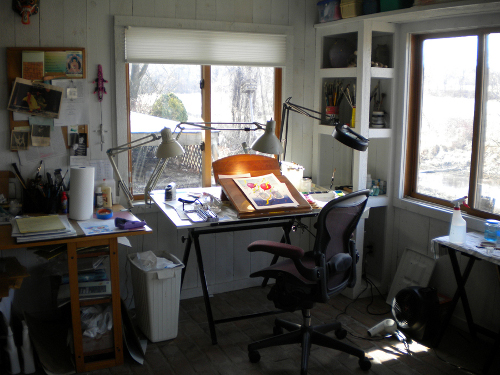
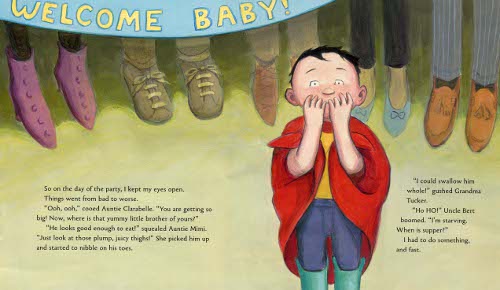
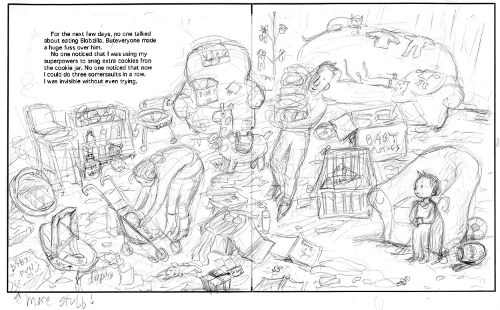
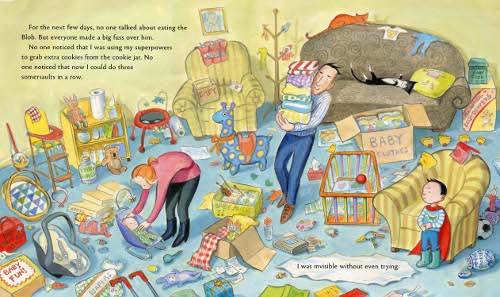
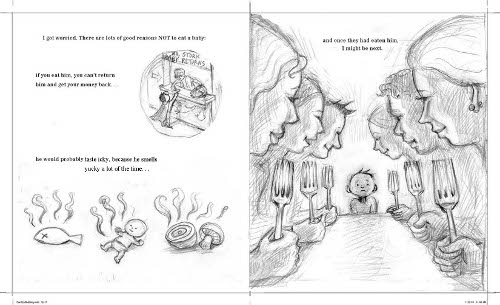
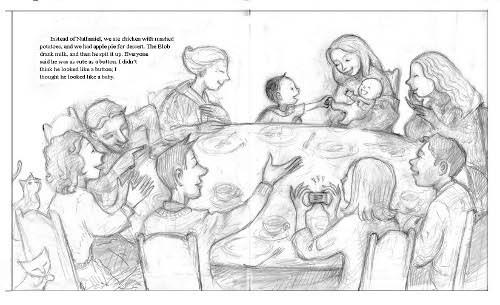

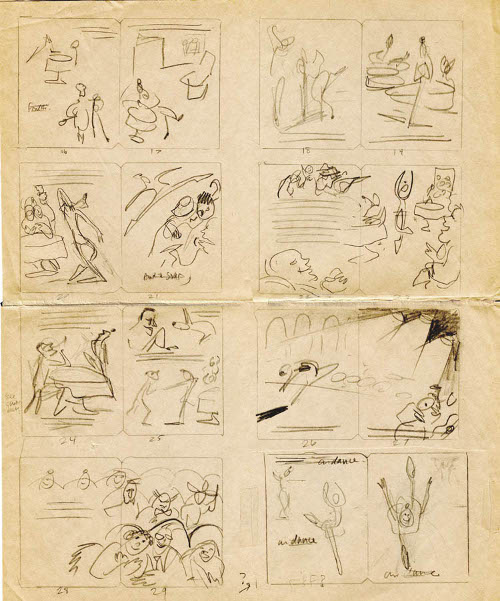


Thanks for sharing the behind-the-scenes look — especially loved all the super sketches!
And I can attest, Amy is certainly very kind – the themes of her books are practiced in her life.
Congrats on the great new book!
I love Amy’s respect for and understanding of her readers and their internal lives. The books look terrific; can’t wait to sit down with them.
Hi Susan! Nice interview and excellent choice of artist/author and books! I love the look of them and Amy seems exactly like the advice she’s hoping kids take away from her books: being true to herself and kind!
Glad you’ve had fun with Jules.
Best of luck, whatever comes next.
Oh wait, summer isn’t over – I’m just in that mindset because Los Angeles public school started this week!